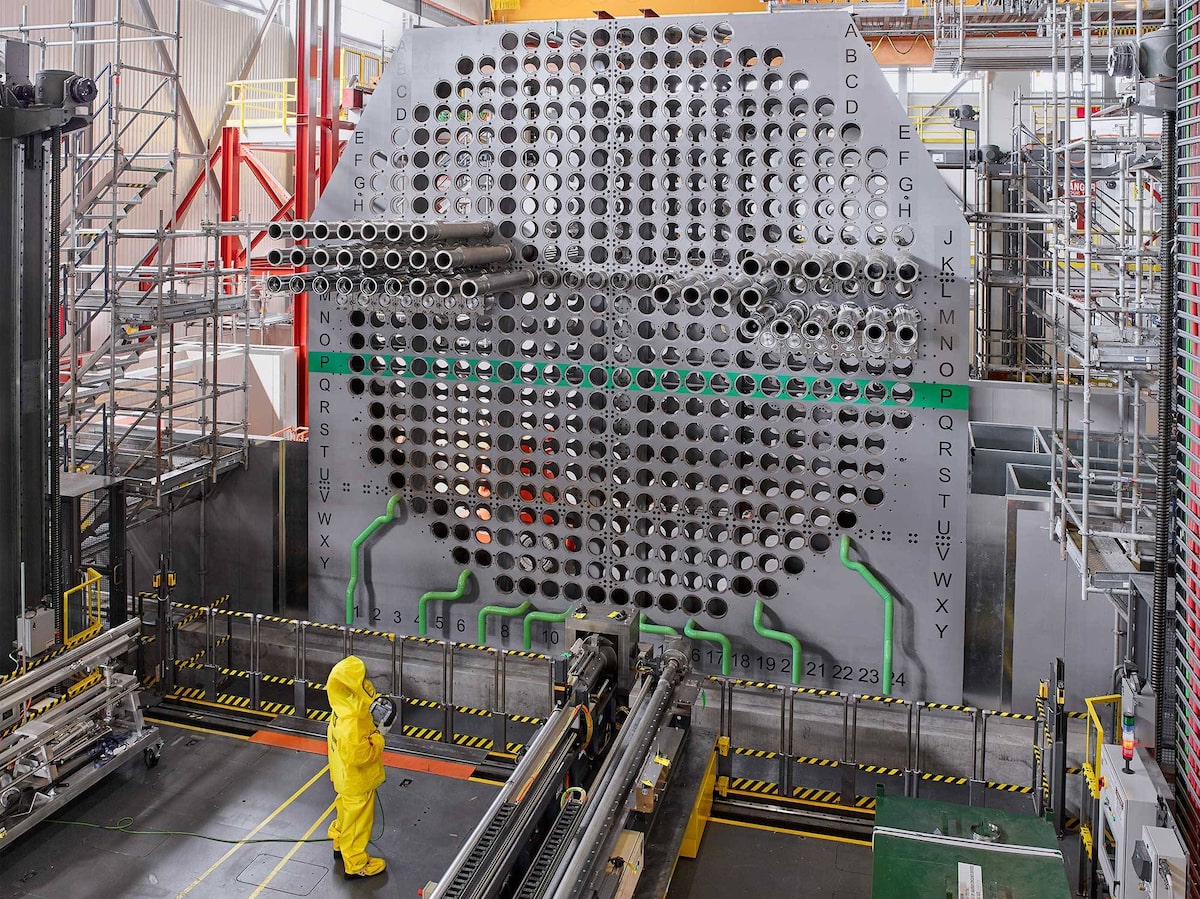Northern Light
Superstar
Reasonable eh?
I have read the all the various reports at the above url, that took awhile. Thank you for the link.
However, I hasten to note that nothing in any of the reports refutes my position.
In fact, to quote just one tiny item from one of the reports....
The point at which the UFC would fail mechanically is not currently known
the UFC being the containers which would contain spent fuel.
I would suggest, that unless and until the above question is answered, we do not yet have any safe or affordable means of nuclear fuel disposal. I would further submit that it is inherently unreasonable to proceed with a choice of power where the risk and cost models are at best indeterminate.
I didn't suggest, at any point that reactors were the same as disposal sites. Both reactors and disposal sites pose safety risks, though the risks with reactors are generally quantifiable and for the most part, not catastrophic. However, they are real, they have happened, and thus the examples cited.
In terms of risk at disposal sites, as no permanent sites have been constructed, there is no successful risk evaluation to discuss. But I have commented on the scientific reports you cited above by saying they are less than conclusive in their endorsements.
While spent fuel is very unlikely to explode it does have the potential to contaminate ground water and surrounding land area.
A read of all the factors they have excluded, or minimized across the various reports, how conditionalized their endorsements of potential storage choices are , and their only tepid claims (a life span of 10,000 years for containment that will be required well beyond that point) hardly reads as confidence inspiring.
In the end, however, the costs of disposal, absent any disaster, are not being factored into the cost of production; that is intellectually dishonest, and makes nuclear much more expensive than it seems are first blush.
Solar power can be and is generated on cloudy days, the same way you can get a tan on a cloudy day, though this does occur more slowly.
Assuming an Even distribution of Wind Power sites throughout Ontario, I find it most unlikely there would ever be a wind-free day; though certainly any given local site may lack wind, that is why you construct some surplus and overlapping capacity and why you have baseload in the form of hydro, and geo-thermal which are both predictable and consistent.
Further, I did not suggest a power mix based entirely on sun and wind, but rather that in concert with hydro, geothermal and other renewables that nuclear was not required to go coal-free.
***
In reference to pricing:
My assessment of likely pricing outcomes is a reasonable one, not a fantasy or a fiction.
Pricing models the world over are knowns, as are proposed tariff rates for various feed in power to the grid in Ontario.
We can weight wind @ 11-13c per Kw/h; solar at 40-50c per KW/H; Hydro varies widely with new construction, but aggregate costs in Ontario put in in the 5c per k/w hour range, coal is not far off, while nuclear.....
Nuclear is interesting. Because the nominal calculation of the cost of production typically shows 2-3c per KW/H; but that is only because the cost of capital construction, interest on the associated debt and virtually all indemnity in the event of any kind of disaster/accident small or large is not shown as part of that figure.
In Ontario the Debt repayment charge on your hydro bill is for Darlington, but it is not used to calculate the costs of nuclear power in OPG or OPA models. Further this doesn't even count the debt the province uploaded; again the indemnity is not accounted for at all.
Were one to add the non-indemnity costs together; nuclear becomes the most expensive of the conventional or baseload power options for Ontario.
Were one to add even a modest indemnity charge, based on a very long amortization period one would find that nuclear power is more expensive than every form of power except solar.
In terms of using this pricing information to show likely costs from a nuclear-free power mix, using a range of power options, excluding coal and nuclear we can posit a range or likely power rates.
This range is wide, because its exact numbers on based on the precise power mix chosen, the total level of demand, transmission costs; and whether there is full demand-based pricing (in which case the exact power rate varies by time of day).
The range model shows a nuclear free and coal free Ontario can get power at between 9-14c per KW/H
Current peak demand pricing in Ontario is nominally close to 6 c per KWh.
However, that excludes those pesky debt charges, and transmission costs are fudged in there.
So in reality, we currently pay, inclusive of debt charges, somewhere around 8-9c per KWh for peak-supply, 1-2c lower during off-peak.
****
You asked if I want power as expensive as Europe. Hmm. Its not a matter of wanting high prices for their own sake, it is a matter of wanting power to be accurately priced and not subsidized either though public debt and indemnification or through externalized costs such as the healthcare system bearing with coal.
I do anticipate, that since Ontario's prices are artificially low, through public subsidy and cost externalizations that prices must inevitably rise.
However, given that Ontario does have access to cheaper hydro power and in fact greater wind and solar than much of Europe that it will not prove necessary to have power costs that high. Nonetheless, as both Europe and New York State prove, high power costs are not an undue burden to a healthy economy; subject to a reasonable period of adjustment, people and business will simply become more efficient in their use of power. Canadians are the most wasteful power users around, and a little judicious efficiency is over due.
***
In conclusion, Hydrogen, I was not being personally insulting to you. I was asserting a rhetorical point.
But if you would like to suggest that a reasonable and well informed person can endorse in an intellectually honest manner ...
A power source whose total factored cost (construction, maintenance, production, and disposal) without the consideration of indemnity, exceed the cost of even wind power and further that when even a low indemnity model is applied the costs become that much more exorbitant..... all while imposing a small, but real safety/environmental risk of indeterminate, but potentially severe scope; a risk which does not exist for any other means of power production, including those which are more affordable.......
By all mean, say so.
I would respectfully beg to differ.
The trouble with opening sentences like yours is that they come off as idiotic. You appear to imply that only unreasonable and ill-informed persons support the development of nuclear power - which is dumb. For your information, there are many reasonable and well-informed people who support nuclear power.
For your own information (so you can be reasonably informed finally):
http://www.nwmo.ca/technicalresearch
I have read the all the various reports at the above url, that took awhile. Thank you for the link.
However, I hasten to note that nothing in any of the reports refutes my position.
In fact, to quote just one tiny item from one of the reports....
The point at which the UFC would fail mechanically is not currently known
the UFC being the containers which would contain spent fuel.
I would suggest, that unless and until the above question is answered, we do not yet have any safe or affordable means of nuclear fuel disposal. I would further submit that it is inherently unreasonable to proceed with a choice of power where the risk and cost models are at best indeterminate.
Again, if you were reasonably informed, you would quickly discover that a waste storage site is nothing like a reactor - and certainly nothing like a graphite-moderated reactor.
I didn't suggest, at any point that reactors were the same as disposal sites. Both reactors and disposal sites pose safety risks, though the risks with reactors are generally quantifiable and for the most part, not catastrophic. However, they are real, they have happened, and thus the examples cited.
In terms of risk at disposal sites, as no permanent sites have been constructed, there is no successful risk evaluation to discuss. But I have commented on the scientific reports you cited above by saying they are less than conclusive in their endorsements.
While spent fuel is very unlikely to explode it does have the potential to contaminate ground water and surrounding land area.
A read of all the factors they have excluded, or minimized across the various reports, how conditionalized their endorsements of potential storage choices are , and their only tepid claims (a life span of 10,000 years for containment that will be required well beyond that point) hardly reads as confidence inspiring.
In the end, however, the costs of disposal, absent any disaster, are not being factored into the cost of production; that is intellectually dishonest, and makes nuclear much more expensive than it seems are first blush.
Except for those pesky windless and sun-free days.
Solar power can be and is generated on cloudy days, the same way you can get a tan on a cloudy day, though this does occur more slowly.
Assuming an Even distribution of Wind Power sites throughout Ontario, I find it most unlikely there would ever be a wind-free day; though certainly any given local site may lack wind, that is why you construct some surplus and overlapping capacity and why you have baseload in the form of hydro, and geo-thermal which are both predictable and consistent.
Further, I did not suggest a power mix based entirely on sun and wind, but rather that in concert with hydro, geothermal and other renewables that nuclear was not required to go coal-free.
***
In reference to pricing:
My assessment of likely pricing outcomes is a reasonable one, not a fantasy or a fiction.
Pricing models the world over are knowns, as are proposed tariff rates for various feed in power to the grid in Ontario.
We can weight wind @ 11-13c per Kw/h; solar at 40-50c per KW/H; Hydro varies widely with new construction, but aggregate costs in Ontario put in in the 5c per k/w hour range, coal is not far off, while nuclear.....
Nuclear is interesting. Because the nominal calculation of the cost of production typically shows 2-3c per KW/H; but that is only because the cost of capital construction, interest on the associated debt and virtually all indemnity in the event of any kind of disaster/accident small or large is not shown as part of that figure.
In Ontario the Debt repayment charge on your hydro bill is for Darlington, but it is not used to calculate the costs of nuclear power in OPG or OPA models. Further this doesn't even count the debt the province uploaded; again the indemnity is not accounted for at all.
Were one to add the non-indemnity costs together; nuclear becomes the most expensive of the conventional or baseload power options for Ontario.
Were one to add even a modest indemnity charge, based on a very long amortization period one would find that nuclear power is more expensive than every form of power except solar.
In terms of using this pricing information to show likely costs from a nuclear-free power mix, using a range of power options, excluding coal and nuclear we can posit a range or likely power rates.
This range is wide, because its exact numbers on based on the precise power mix chosen, the total level of demand, transmission costs; and whether there is full demand-based pricing (in which case the exact power rate varies by time of day).
The range model shows a nuclear free and coal free Ontario can get power at between 9-14c per KW/H
Current peak demand pricing in Ontario is nominally close to 6 c per KWh.
However, that excludes those pesky debt charges, and transmission costs are fudged in there.
So in reality, we currently pay, inclusive of debt charges, somewhere around 8-9c per KWh for peak-supply, 1-2c lower during off-peak.
****
You asked if I want power as expensive as Europe. Hmm. Its not a matter of wanting high prices for their own sake, it is a matter of wanting power to be accurately priced and not subsidized either though public debt and indemnification or through externalized costs such as the healthcare system bearing with coal.
I do anticipate, that since Ontario's prices are artificially low, through public subsidy and cost externalizations that prices must inevitably rise.
However, given that Ontario does have access to cheaper hydro power and in fact greater wind and solar than much of Europe that it will not prove necessary to have power costs that high. Nonetheless, as both Europe and New York State prove, high power costs are not an undue burden to a healthy economy; subject to a reasonable period of adjustment, people and business will simply become more efficient in their use of power. Canadians are the most wasteful power users around, and a little judicious efficiency is over due.
***
In conclusion, Hydrogen, I was not being personally insulting to you. I was asserting a rhetorical point.
But if you would like to suggest that a reasonable and well informed person can endorse in an intellectually honest manner ...
A power source whose total factored cost (construction, maintenance, production, and disposal) without the consideration of indemnity, exceed the cost of even wind power and further that when even a low indemnity model is applied the costs become that much more exorbitant..... all while imposing a small, but real safety/environmental risk of indeterminate, but potentially severe scope; a risk which does not exist for any other means of power production, including those which are more affordable.......
By all mean, say so.
I would respectfully beg to differ.





